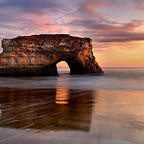Greek Bronzes
@ClassicalAegis
Greek bronzes are more than artistic masterpieces- They’re a unification of art and science. Let’s check out the chemistry, craftsmanship, and beauty that make these creations truly extraordinary…
Bronze revolutionized Greek sculpture and is typically composed of 90% copper and 10% tin. This combination gives bronze a lower melting point than pure copper, allowing it to stay liquid longer when filling a mold…
The island of Cyprus was a major source of copper in antiquity. In fact, the very name “Cyprus” is derived from the Greek word for copper. Tin, however, was often imported from as far as Turkey and Afghanistan..
Early Greek bronze statues were made using the sphyrelaton technique, where hammered sheets of metal were riveted together. This method produced simple forms but allowed for intricate designs through embossing and tracing.
Everything changed in the Late Archaic period (ca. 500–480 B.C.) with the introduction of lost-wax casting. This technique allowed for more complex and larger bronze sculptures.
Lost-wax casting involves creating a wax model, encasing it in clay, melting out the wax, and then pouring molten bronze into the resulting cavity. This method could be done in solid or hollow forms…
For large statues, hollow lost-wax casting was preferred. The process began with a clay core, often supported by an iron armature. This core was then coated with wax and detailed by the sculptor. Leonardo’s drawing of a cast.
After adding vents for metal flow and gas escape, the wax-coated core was covered in another layer of clay. The whole mold was then heated to melt out the wax, creating a hollow matrix for the bronze.
The bronze used in Greek statues was typically heated to about 2100°F (1200°C). At the time, this was extremely dangerous work…
Large statues were often cast in separate pieces — head, torso, arms, and legs — and then assembled. This piecing technique allowed for the creation of impressively large and complex sculptures.
After casting, the statues underwent a “chasing” process. This involved cutting off excess bronze, smoothing seams, and refining details. Sandblasting was often used to create a uniform surface.
The iconic green patina we associate with ancient bronzes is actually a result of oxidation over time. Ancient Greeks would have seen these statues in their original golden-brown bronze color…
Greek sculptors often inlaid their bronze statues with other materials for added realism. Copper was used for lips and nipples, silver for teeth and nails, and various stones or glass for eyes, creating startlingly lifelike figures…
The famous Riace Bronzes, discovered in 1972 off the coast of Italy, have provided invaluable insights into ancient Greek bronze-casting techniques. Their study has sparked renewed interest in this ancient art form.
From the chemistry of alloys to the intricate casting processes, Greek bronze sculpture represents a remarkable unification of art and science. It’s symbolizes the ingenuity and skill of ancient craftsmen, whose legacy continues to inspire us today!
